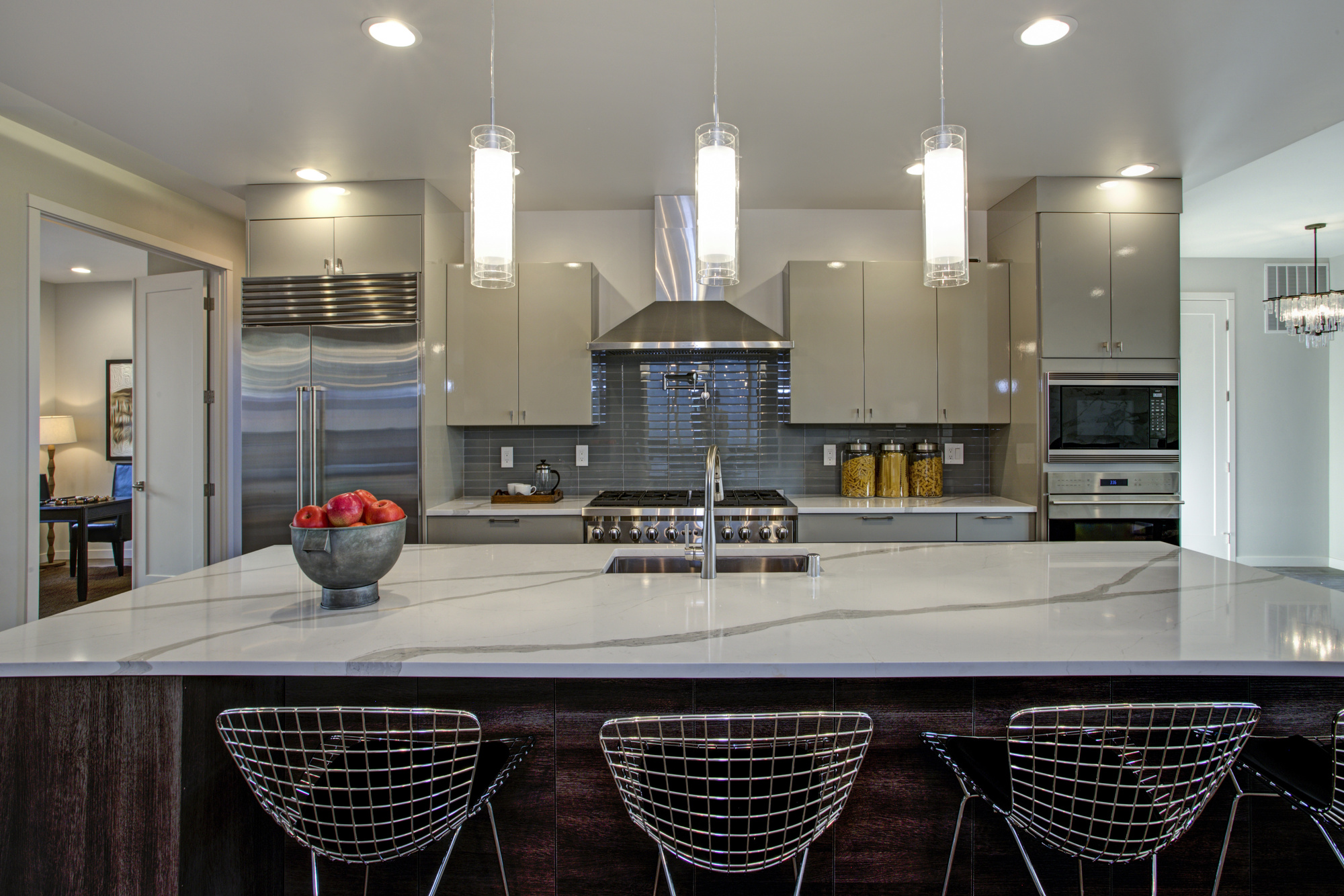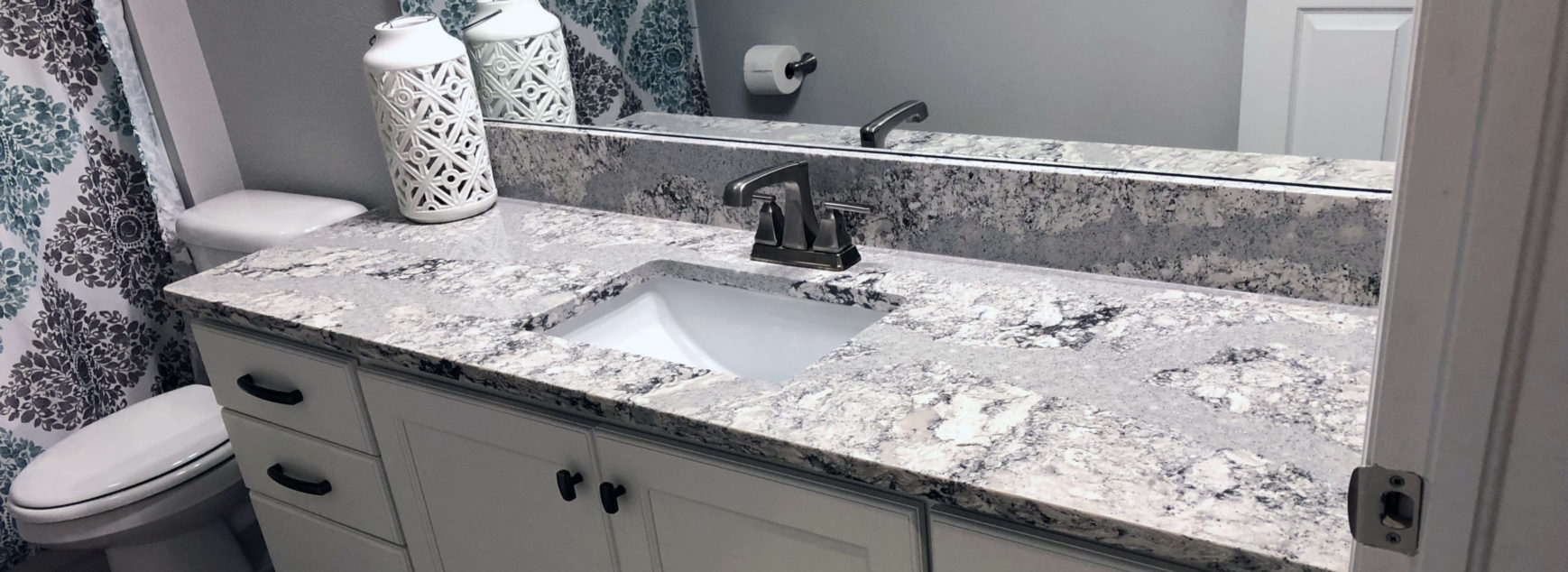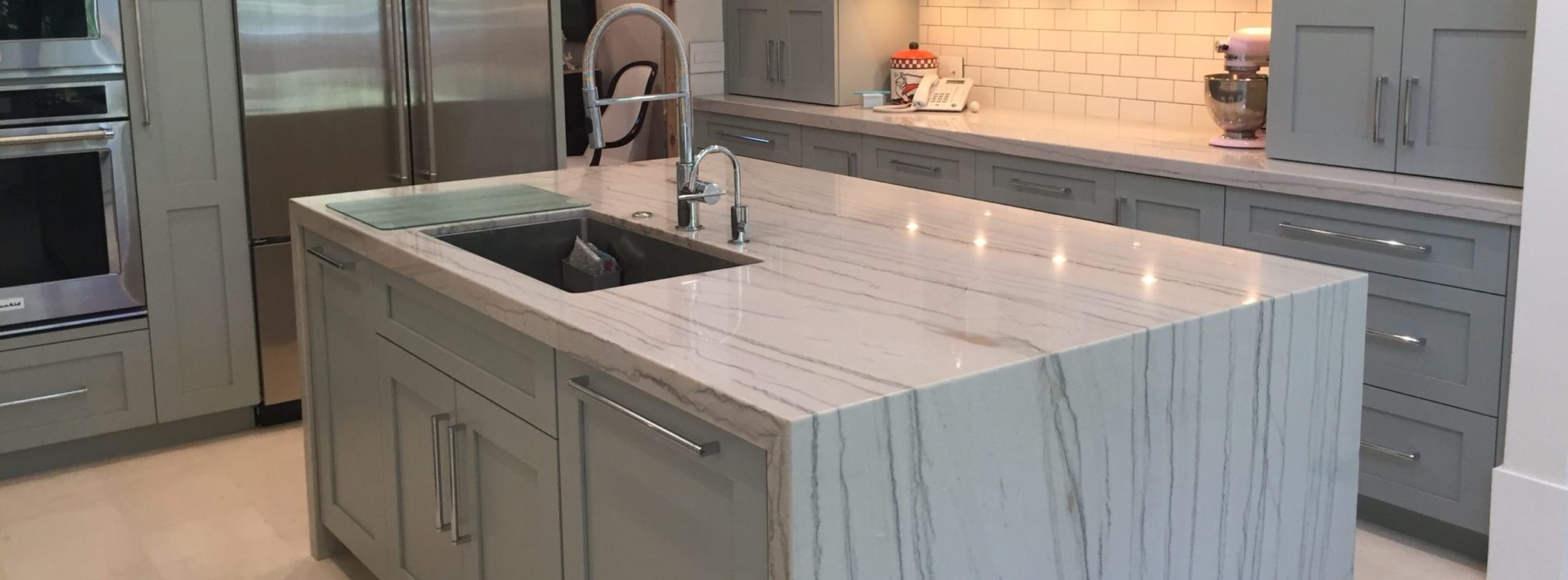
You’re ready to tackle the home renovation project you’ve been waiting for years to do: the replacement of your kitchen countertop. Finally, you can say goodbye to that hideous ’70s yellow laminate kitchen countertop and say Hi to your new high-end surface.
The question is, exactly what material should your new countertop be?
Don’t worry – you’re not the only homeowner asking this question. The industry for countertop manufacturing has skyrocketed 2.8 percent over the past few years, reaching a revenue of $2 billion in 2018. In your case, you may specifically be torn between quartz and quartzite – and for good reason. Both of these countertop options are popular.
Here’s a rundown on quartz vs quartzite countertops. Let’s dig in!
Quartz vs Quartzite: What Exactly Are Quartz and Quartzite?

Quartzite and quartz are both high-end materials that are often used interchangeably among retailers because they seem so alike. However, these two materials are quite different. Specifically, quartzite and quartz vary in terms of durability, maintenance, looks, and composition.
Quartzite is a metamorphic rock created below the surface of the earth. This happens when sandstone that’s rich in quartz is changed through high temperature and pressure. Afterward, professionals mine the quartzite and cut the natural stone into slabs. Because quartzite comes directly from the earth, it’s a lot like quarried marble, soapstone, and limestone.
Quartz, on the other hand, is manmade. It’s made up of 90 percent ground quartz. The other 10 percent is a mixture of pigments, resins, and polymers that are used to bind the quartz pieces together. After being molded, this engineered stone is baked into sturdy slabs in the factory setting. What makes quartz and quartzite so similar is that they are both extremely durable. In fact, they’re both harder than granite.
However, they still differ in terms of hardness as well as in their many other properties. Let’s take a look at how different these two materials are before you make your final countertop material choice.
Hardness

Although both materials are harder than granite, as we mentioned earlier, quartz is still harder than quartzite.
Quartz itself is the 4th hardest stone on Earth, only 3 spots behind Diamonds, being the hardest mineral on the planet. Quartzite, as it is a natural stone, is susceptible to naturally occurring fissures or cracks beneath the surface that can weaken with continued use.
Still, you can easily scratch both quartzite and quartz with a sharp object. Therefore, you should use cutting boards with both.
Colors and Patterns

Since quartzite is totally natural, which is perfect for the eco-conscious consumer, it comes in a wide variety of patterns and colors. In other words, you won’t find two quartzite slabs that are completely alike. However, quartzite primarily comes in gray or white shades. Still, if the stone has some iron oxide in it, this could give it a red or pink hue. Also, the quartzite slab patterns you’ll come across will be limited to what takes place via natural formation. The veined finish of a quartzite slab typically resembles that of marble or granite, with inconsistencies visible across the slab.
Quartz, however, comes in many more patterns and colors. This is because the pigments that manufacturers add to quartz can help with achieving a range of colors. For instance, your quartz could be a deep pink, a light blue, or even an orange or violet. This is especially handy if you’ve got a certain flooring or cabinet color that you’d like your countertop to match. With quartz, you’re more likely to find a countertop that meets your needs relatively quickly.
Searching for a quartzite slab that fits your criteria, on the other hand, can feel like trying to find a needle in a haystack. In addition, your factory-generated quartz slab could be veined or flecked in such a way as to display diverse patterns. These patterns can effortlessly add character to your kitchen and be visually appealing. The great thing about quartz is that technology is constantly advancing, so it’s getting tougher to tell quartz from quartzite. However, since quartz is created in a large-scale manner that’s controlled, patterns will start to become repetitive at some point. Note, though, that bold veins can be taken out of quartz, which will yield a more uniform and consistent appearance. This is perfect if this is the look you’re going for in your kitchen.
So, the key takeaway here?
If you’d like your kitchen countertop to look like natural stone, you should go with quartzite. Meanwhile, if you prefer a more asserted selection of patterns and colors to consider, you should stick with quartz.
Texture

Naturally, since quartzite comes from the ground, it has an earthier feeling, touch wise and visually. Quartzite slabs keep the sugar-like, granular texture that sandstone has. This makes them ideal for homeowners who want their countertops to feel organic and coarse.
The opposite is true for quartz. The resin used in quartz makes a quartz countertop feel seamless and smooth, which is fine if you’re okay with your countertop having somewhat of a manufactured look. Of course, many homeowners prefer to buy manufactured products over natural ones because they can find out the specific physical properties of their manufactured products. This isn’t possible with naturally occurring products, which can have unpredictable properties.
Scratch Resistance

When it comes to being scratch resistant, quartzite registers a 7 to 9 on Moh’s scale of mineral hardness. This makes it less scratch-resistant than quartz, which registers a 4 on this same scale. As we mentioned earlier, you should avoid cutting directly on either quartzite or quartz. However, this is especially critical if you have quartzite, as food acids such as lemon or tomato sauce, can interact with and cause etching to your countertop. This interaction between the stone and food acids will make your quartzite countertop more susceptible to etching. Etching is basically acid erosion leading to white spots that are dull or pitted marks as if the stone s been eaten or chipped away. Besides the fact that it has etching issues, is that it quartzite generally comes with beautiful veins. These veins can be extremely helpful for disguising imperfections.
Quartz countertops don’t have this etching issue. Quartz Countertops won’t scratch or stain like quartzite, due to its inherently stain-resistant nature.
Heat and Stain Resistance

If you choose quartzite, you can freely place hot pans and baking dishes on your kitchen countertop.
However, as we said earlier, quartz countertops contain resin that can melt at more than 300 degrees Fahrenheit. Therefore, if you put a hot pan on a quartz surface, it may leave a scorch mark or indentation on your countertop that you won’t be able to get rid of. WE recommend using a trivet or potholder underneath any hot pot regardless of material type. Using a potholder protects your investment, whether it be granite, quartz or quartzite, it’s just a good practice to get into the habit of doing.
When it comes to being stain resistant, though, you can’t beat quartz. Quartz is so dense that it’s more capable of combating stains than quartzite is. That means you can choose a quartz countertop that is solid white and not have to worry about inevitable spills and messes staining your countertop long term.
Moisture Resistance

If choosing a countertop material that is extremely moisture resistant is important to you, choose quartz. This engineered stone’s surface requires no sealing since it’s not porous. Therefore, the surface is an excellent barrier against microbes and moisture. In light of the above, bacterial invasions and permanent staining are unlikely with a quartz countertop. To keep this type of countertop clean, just wipe up any wet spills that occur by using a damp cloth. If you come across a dried spill, use a soft, damp sponge and a commercial cleaner to remove it.
Quartzite, however, is still a porous stone by nature. To remedy this, you can pay an additional fee to have your Countertops sealed, but sealing your Countertops is not an End all Be all for moisture absorption. Moisture can still be absorbed if spills are left to dry on the Countertop. The sealer acts as a buffer, giving you a couple of minutes to wipe up a stain before it starts to penetrate through the sealer.
Routine Countertop Maintenance
To clean your quartz countertop routinely, spray a homemade or store-bought countertop cleaner on the surface, and allow it to sit for about 10 minutes. Next, wipe down the countertop with a sponge. Be sure to use a cleaner that is designed to work with quartz. Also, avoid using an abrasive cleaner on this type of countertop material, as it simply isn’t needed. Avoid using a Magic Eraser or abrasive powders like Ajax on Quartz Countertops. That’s what is so great about quartz: it’s much more low maintenance compared to quartzite.
You can use these methods listed above to clean a quartzite countertop as well. However, quartzite has a porous surface, so it’s critical that the surface is sealed before it’s installed in your kitchen. You’ll also want to seal it once or twice each year following its installation. A sealer designed for use on natural stone is all you need to get the job done. Simply allow the sealer to soak in for between 10 and 15 minutes. Then, wipe your countertop surface with a clean cloth. Finally, allow the sealer to cure for one to three days. Quartzite requires more tender loving care than quartz does. However, with the help of a sealer, you can protect your quartzite countertop against coffee, citrus, and wine stains that can easily penetrate the stone. And as a result, cleanup will be a breeze every time.
DIY Friendliness
If you’re looking for a countertop material that is specifically DIY friendly, you won’t find it with either quartz or quartzite. A slab of quartzite typically weighs a few pounds per square foot less than a quartz slab does. However, they both weigh at least 20 pounds per square foot. So, it’s not recommended that you install these countertop materials yourself.
Pricing

As a whole, quartz is a bit less expensive than quartzite is. This difference in price is primarily due to the greater complexity of turning mined quartzite into a slab. With quartzite, a professional has to cut the quartzite by using a diamond blade. This task, which requires a high level of talent and skill, generates slabs of various sizes. Quartz isn’t as expensive to produce because after it’s bound with pigments and resins, professionals pour it into a mold. Then, the material is baked into slabs of standard sizes. This is a more straightforward process than that associated with quartzite.
Buy Quartzite Countertops or Quartz Countertops Today
We offer a wide range of countertop material options for the modern homeowner.
In addition to offering quartz and quartzite, we provide the following materials:
- Granite
- Cambria
- Gemstone
- Vetrazzo
- Marble
- Onyx
- Silestone
- Recycled glass
When it comes to quartz in particular, we are known for our vast selection of countertop hues and patterns. For instance, we offer Quantum and Pompeii quartz if you’re looking for more of a gray color.
Meanwhile, we offer Aberdeen Cambria quartz if you’d like more of a brown hue in your kitchen. And we have Armitage Cambria quartz available if you’re eyeing a black color for your kitchen countertops.
For quartzite, we also have a number of options designed to suit your kitchen’s style. For example, bamboo green quartzite is a perfect option if you want your kitchen to have a more exotic vibe to it. In addition, Alexandrita emerald quartzite is a great choice if you want a sophisticated look.
We can walk you through the process of choosing the right material for your countertop. Then, once you’ve chosen it, we’ll work hard to get it installed for you as quickly and efficiently as possible.
Our ultimate goal? To help make your dream kitchen a reality this year.
Get in touch with us to find out more about quartz vs quartzite. We’ll show you how either of these materials can take your kitchen to the next level in terms of both functionality and appearance.

